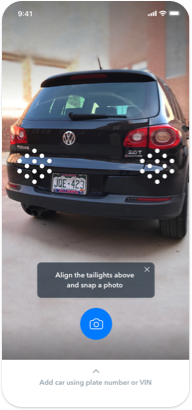
Buying or selling a vehicle (or just about anything else) online can be intimidating. Who wants to meet up with potentially sketchy characters at your home, or go to the other person’s home? No one. You don’t have to look too hard to read real-life horror stories of people who showed up for a transaction and were robbed – or worse. There was even an episode of the TV show “Criminal Minds” about a guy who murdered people on test drives. Honestly, the vintage Datsun 240Z was the best part of that episode.
Safe Transaction Zones
To address the problem of bad guys among the ever-growing number of transactions that start online and end in person, cities and businesses are working to establish monitored meeting places for people to conduct transactions.
Automobile transactions present numerous special challenges that don’t apply when you’re selling a guitar or a laptop.
For example, California’s Orange County Register reports the police departments of Buena Park and Irvine have established reserved parking spaces, covered by cameras, at their respective headquarters. This idea is gaining traction around the country, with many other police departments and city governments implementing similar safe meeting places for online-based transactions.
Technology is playing its part in making Internet transactions safer, too. The website www.safedeal.zone lists dozens of known safe transaction locations across the United States, and adds new locations as they become known.

“As safe transaction zones are starting to pop up all over the country we thought it would be a good idea to create a way to collect and list available locations,” the Safe Deal Zone website explains. Safe Deal Zone provides only the locations, however. You have to find the car to buy on your own.
But what about cars?
Automobile transactions present numerous special challenges that don’t apply when you’re selling a guitar or a laptop. It starts with the test drive. Do you give the person the key, let them go alone, and risk car theft, or do you ride along and risk making the evening news in a bad way?
Blinker, a car selling app, performs an exhaustive fraud check on every vehicle sold on the platform and includes a free Carfax for all listings.
Then there’s arranging the pre-purchase inspection, handling a large amount of cash or a risky cashier’s check, handing over the title with your address on it, and finally handing over the car while it’s still registered to you. More than one seller has had a tense visit from the cops months later because the buyer never changed the registration and used the car to commit a crime.
Serial auto dealership entrepreneur Rod Buscher thinks he has a pretty good solution to all that, so he created a car sales app called Blinker. The app launched in 2016 and Blinker says its platform has facilitated over $45 million in transactions to date. The Blinker app was even nominated for a Webby award for best use of mobile camera. Buscher’s company currently holds 13 patents for the photo technology it uses to show cars for sale.
“Blinker provides an end-to-end solution, allowing anyone to sell their car, buy a car with financing, or refinance a car all on their own,” the company stated. “Blinker verifies the identity of every buyer and seller, as well as ownership records of each vehicle.”
The app performs ID work on the buyer and seller. It also handles the money transfer with encrypted banking information and more.
“Blinker performs an exhaustive fraud check on every vehicle sold on the platform and includes a free Carfax for all listed cars,” the company points out. Though Blinker currently operates in California, Colorado, Texas, and Florida, it plans to expand nationwide as soon as possible.
A new business opportunity
Here’s the most interesting part: Blinker has also teamed up with Big O Tires to offer authorized safe test-drive sites at 36 Denver locations. This is an idea that could revolutionize safe transaction zones and give a boost to businesses that get on board. Buyers and sellers can see a list of participating safe transaction zones on the Blinker app before agreeing to meet.
“After seeing police stations creating [safe deal zones] across the U.S., we had the idea of establishing … safe locations for vehicle test drives.”
“The Blinker team has watched the trends and industry closely and understood that many consumers are uneasy about in-person exchanges, even when meeting during the daytime in public places,” Blinker’s PR staff told Digital Trends. “In the last several years, there’s been a trend of thefts and injuries during these transactions regardless of the time of day.”
The partnership between Blinker and Big O Tires is currently limited to the Denver area, but the idea is so simple and beneficial that it’s likely to spring up elsewhere. The benefit for a participating business is that it can offer quick pre-purchase inspections on the cars bought and sold at their safe location.

“After seeing police stations creating e-commerce exchange zones across the U.S., we had the idea of establishing the same designated safe locations for vehicle test drives,” said Andrew Price, Chief Marketing Officer for Blinker. “Plus, since we leave the inspection process up to our customers, buyers can conveniently get vehicle inspections at Big O Tires locations, too.”
The idea is genius for buyers and sellers who want a safe place to do business and for participating businesses. No one wants to buy a car with bald tires and hear the seller try to say there’s nothing they could do about it while standing in front of a tire store.







